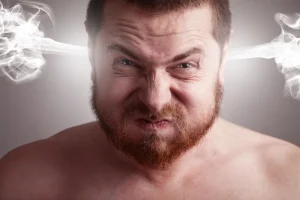
With little calorie or protein intake the skin becomes dry and loses elasticity. Treatment for skin issues related to AUD will typically involve two processes. One is treating the AUD, and the other is treating any underlying conditions that may remain after a person stops consuming alcohol. Although drinking alcohol can cause a person to fall asleep faster, it may cause them to wake up more often during the night.
What are the short and long-term effects of alcohol on the skin?

When the skin begins to itch, and bumps appear, it is time to put down the cup and drink some water. The red, itchy bumps can be unattractive and may be a sign of a person’s inability to process alcohol. Many people are allergic to alcohol, and older adults begin to see signs that were not there in their younger years.

Treatment for Alcohol Withdrawal Shaky Hands
- This means sagging skin, fine lines, and deeper wrinkles over time.
- Psoriasis is another skin condition that has been linked to alcohol consumption.
- According to a 2020 study, applying topical brimonidine to the skin before drinking alcohol may be effective in reducing the appearance of flushing.
- Medical addiction treatment programs offer comprehensive care for individuals struggling with alcohol addiction.
- The best thing you can do for your skin and health is to reduce your alcohol consumption.
Drinkaware also reports that almost 1 https://ecosoberhouse.com/ in 7 adults do not drink. Besides, non-alcoholic drink options have never been better – I stock up on Saicho and Fortnum & Mason’s Sparkling Tea every December – driven by an increasingly sober-curious society. Mainly because it wasn’t a big part of my culture growing up in Malaysia, and I’ve seen enough friends nursing terrible morning afters for me to even be remotely tempted. Plus, as I’ve discovered, alcohol affects your skin in many not-so-great ways. You can expect to hear about more research, debate, and controversy in the near future regarding the potential risks and benefits of drinking, and how much — if any — is ideal. Assessing the risks and benefits of alcohol consumption remains an active area of research that may lead to major changes in official guidelines or warning labels.
Report on alcohol and cancer risk challenges the safety of moderate drinking

This how alcohol affects your skin article discusses some of the short and long-term effects that drinking alcohol can have on a person’s skin. One of the most recognisable signs of long-term alcohol misuse is ongoing facial redness, particularly around the cheeks and nose. Alcohol causes blood vessels to expand and repeated dilation over time can lead to permanently broken capillaries, known as telangiectasia. This results in a flushed or blotchy complexion that doesn’t fade, even after periods of sobriety.
How to spot signs of addiction
Jaundice is a serious sign of liver dysfunction what is Oxford House and often indicates conditions like alcoholic hepatitis or cirrhosis. As mentioned earlier, alcohol is a diuretic and can lead to dehydration. When your body is dehydrated, your skin becomes dry, flaky, and less elastic. It can also exacerbate existing skin conditions and make them more difficult to manage. The liver is responsible for breaking down alcohol into acetaldehyde, a toxic substance that can cause damage to various organs in the body, including the skin.
- Sugar worsens inflammation and glycation, accelerating wrinkles.
- This can put a person at risk of becoming ill, getting injured, or dying sooner.
- And frequent drinking increases the risk of developing persistent redness, visible broken capillaries, and an uneven skin tone.
- A number of experts have recommended revision of the guidelines toward lower amounts, as more studies have linked even moderate alcohol consumption to health risks.
- Collagen is the structural protein that keeps skin firm and youthful.
A research team at Ohio State is testing a targeted gene therapy approach to treat alcohol addiction. Ohio State experts explain a new federal advisory that indicates there’s no safe level of regular alcohol use when it comes to cancer risk. Combined, the higher oil levels and inability to fight off acne-causing bacteria may result in more frequent breakouts. Seborrhoeic dermatitis has been observed to be more frequent in heavy drinkers.
Alcohol can trigger psoriasis flare-ups and make symptoms more severe. The extent to which skin damage can be reversed may vary from person to person and hinges on factors like the duration and severity of alcohol abuse, genetics, and overall health. Seeking professional advice and taking a holistic approach to your well-being can improve the likelihood of skin recovery while also benefiting your overall health. While moderation is important, drinking any amount of alcohol can contribute to skin damage and accelerated aging. To promote good skin health, limit your intake to the recommended guidelines, or ideally abstain entirely. Alcohol can impact skin appearance almost immediately, resulting in dryness, dullness, and puffiness, particularly after heavy drinking.
